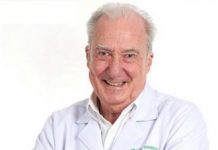I attended a lecture the other day and someone asked if falling asleep on the job was enough reason to give an employee the sack. This was apparently a recurring problem with this employee, but I did caution that this daytime napping might be a medical problem, and not a late night karaoke problem.
The medical condition is an interesting one, and it is called Sleep Apnea. (I actually wrote this article on the World Sleep Day, which is why it jogged my memory.)
Put very simply, Sleep Apnea is when people stop breathing for some seconds while asleep. They are usually not aware of this fact, but bed partners are! People with Sleep Apnea stop breathing repeatedly during the night, sometimes hundreds of times and often for a minute or longer.
It is a worrisome situation when the person lying next to you just seems to have stopped breathing. Was that last breath really their last breath? Should you start CPR?
“Apnea” comes from the Greek and literally means “without breath”, so it is an apt word for the condition where people stop breathing when asleep.
Like so many conditions in medicine, it is not quite cut and dried simple, as there are three types of Sleep Apnea. These are called Obstructive, Central and Mixed, with Obstructive being the most common.
Obstructive Sleep Apnea (OSA) is caused by an obstruction producing a blockage of the airway, usually caused by the soft tissue in the rear of the throat collapses and closes during sleep.
In Central Sleep Apnea, the airway is not blocked but the brain fails to signal the muscles to breathe. Normally as the oxygen level drops, a reflex in the brain tells the body to breathe, to increase the oxygen saturation. This reflex is normally very powerful. For example, try holding your breath, and you will find that you breathe again involuntarily. You cannot over-ride your brain.
Mixed Apnea, as the name suggests, is a combination of the two. With each apnea event, the brain briefly arouses people with sleep apnea in order for them to resume breathing, but consequently sleep is extremely fragmented and of poor quality.
Sleep Apnea is much more common than you would have thought, being as common as adult diabetes, and affects more than twelve million Americans, according to the National Institutes of Health.
Risk factors include being overweight, and over the age of forty, but sleep apnea can strike anyone at any age, even children. Males suffer from this more than females, yet still because of the lack of awareness by the public and healthcare professionals, the vast majority remain undiagnosed and therefore untreated, despite the fact that this serious disorder can have significant consequences.
Untreated, Sleep Apnea can cause high blood pressure and other cardiovascular diseases, memory problems, weight gain, impotency, and headaches. And I think I don’t want any of them. It is also stated that untreated sleep apnea may be responsible for job impairment and motor vehicle crashes.
The symptoms of Sleep Apnea include frequent silences during sleep due to breaks in breathing, choking or gasping during sleep to get air into the lungs, loud snoring, sudden awakenings to restart breathing or waking up in a sweat and feeling un-refreshed by a night’s sleep, including falling asleep at inappropriate times during the day. While snoring can accompany Sleep Apnea, snoring is not in itself harmful (other than keeping your bed partner awake).
Fortunately, these days, Sleep Apnea can be diagnosed and treated in our Sleep Lab, where the respirations, oxygen saturation and other parameters can be measured.
Several treatment options exist, and research into additional options continues. For mild cases, lose weight. Stop using alcohol, tobacco, and sedatives, or anything that relaxes the muscles of the throat and encourages snoring. Sleep on your side. Elevate the head of your bed 150 mm. Use a nasal dilator, ‘breathe right’ strips or saline nasal spray to help open nasal passages. Surgery may be needed to open the throat.
However, the main route for treatment is the CPAP (Continuous Positive Airway Pressure) machine which forces air into the lungs through tubes feeding a face mask. It is cumbersome, but may be necessary, when all else has failed.




